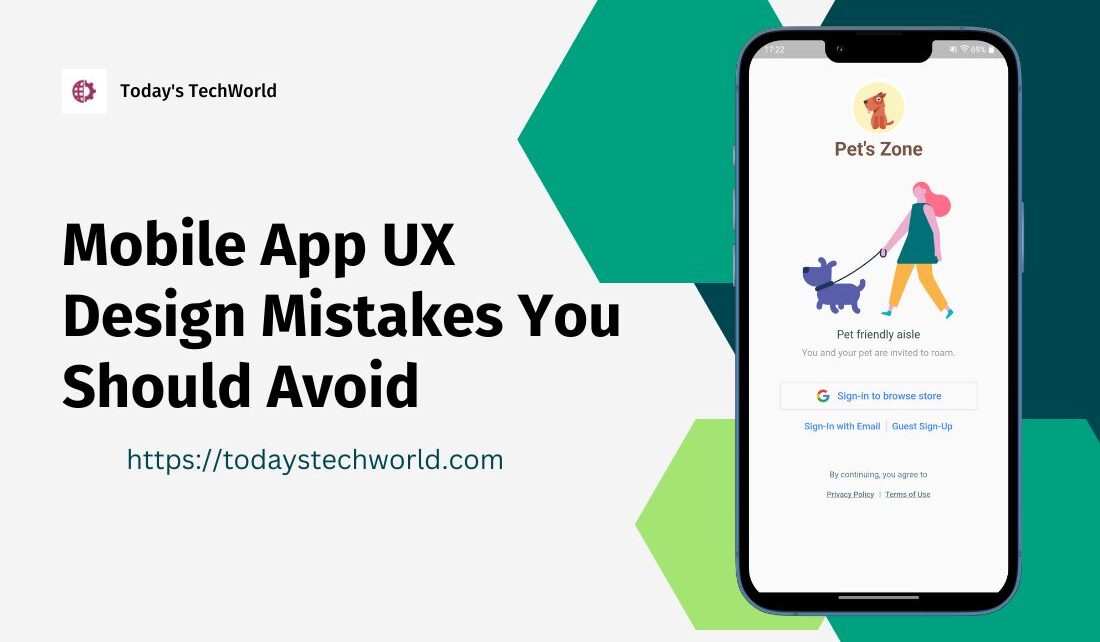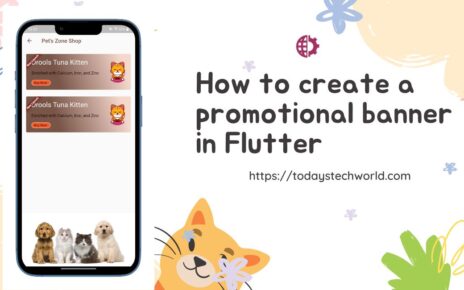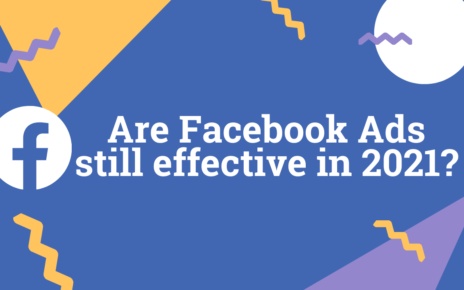Here we will discuss the top 10 common Mobile App UX design mistakes you should avoid while developing or even prototyping a mobile app.
A mobile app goes through various development stages before it is launched. The UX design is one of the most crucial things that makes the app unique and usable. A perfect mobile app gives users the best experience. Therefore, the UX design you choose and how you create the interface determines your product’s competitiveness.
Top mobile app UX design mistakes you should avoid

The following are the mobile app UX design mistakes you must avoid if you want to create a killer app that everyone will love using-
- Bad Onboarding
- Lack of Inbuilt Search
- Overloading Interface
- Ignoring Device Features
- Annoying Notifications
- Design Inconsistency
- Font Problems
- Poor Architecture
- Ignoring Calls to Action (CTA)
- and the most important – Confusing UI with UX
Let’s discuss each UX design mistake in detail and how to avoid them.
1. Bad Onboarding
When the users launch the app for the first time, they need to understand its usability and value. A smooth onboarding of users is a very important factor in mobile app UX design.
If you have an issue with onboarding, you risk losing the user even before showing them what the app does. It will be a good idea to offer a tutorial on how to use the app once the users install it. So, it is in your high interest to give them a good first experience to keep them using the app.
Also Read: How to create a beautiful Flutter login page UI
2. Lack of Inbuilt Search
Some apps don’t display all their content on a single page. That means users need to search for them. Therefore, if you don’t have the search option, it won’t be a good user experience to search for content.
Consequently, you must ensure your app has a built-in search feature to help users find what they are looking for. Ensure the part also has the filter option for high-quality search results.
Denying users the ability to quickly find the information they need will only drive them away to other service providers that offer better Mobile App UX designs including a robust search feature. So, ensure the app has a well-designed built-in search feature.
3. Overloading Interface
Excess content on a page can cause poor user experience. Even though large smartphones allow apps to display a lot of information, we advise against overloading the interface.
Too much content is bad for a mobile app UX design and it confuses the users, especially as it is a deterrent for dyslexic users who find it hard to see and absorb too much content at once. Therefore, ensure the app only displays the vital details at the moment.
The best solution to an overloaded interface is to trim it. It is not easy, but you must know the features you can remove. A good way can be personalizing the mobile app by leaving only the relevant parts and giving users fewer choices. You can also replace text with visuals to remove clutter on your interface.
Also Read: How to create a beautiful Flutter Sign-up Form UI
4. Ignoring Device Features
If you are creating the app for specific devices like smartphones, you must ensure it is compatible and responsive. Incompatibility issues cause a very bad user experience (UX) and may deter users away.
Therefore, after creating the app, it is advisable to consider mobile testing to see how the UX design behaves on the actual device. Mobile testing is very critical in terms of a better Mobile App UX design and it allows you to find out if your app may have issues and whether it is consumer friendly.
You will be surprised how many issues you can rectify before launching the app. The testing will allow you to try out your app on various devices depending on the purpose of the app.
5. Annoying Notifications
Notifications are great for your UX and user retention. However, abusing them does more harm than good. Many people end up uninstalling an app if it keeps sending too many notifications that don’t seem helpful.
You need to realize that not all messages are annoying. Users may appreciate them if they are useful, relevant, and valuable. Therefore, the best way to ensure you don’t annoy and deter away your users is by asking for permission to send notifications.
Also, remember to let them know how these notifications will be beneficial to them. Nonetheless, irrespective of how valuable the notifications might be, don’t send too many. Focus more on quality than frequency.
6. Design Inconsistency
Inconsistencies like unreadable fonts, clashing colors, templates, and navigation will only encourage users to uninstall the app.
Therefore, you need to understand what users want and create something compatible that everyone will like. Being consistent will improve navigation and boost recognition among users. It will also help build an excellent user experience.
7. Font Problems
Typography also plays a vital role in your UX design and affects the user experience. Even if your interface is convenient and impressive, it may only be helpful if it is easy to read.
Common font problems include using too many fonts, too large or too small fonts, poor navigation, poor contrast, and complicated fonts. If a user finds it hard to read then he would uninstall the app immediately instead of spending energy figuring out what is written. So, it is recommended to choose standard fonts for the app and don’t use more than two fonts for a better user experience (app UX).
8. Poor Architecture
Before you begin designing your app, you need a good plan on how users will navigate the content. That means coming up with an elaborate architecture with clear logic. This is a vital stage you should pay attention to since it determines how maneuverable the app will be.
Being keen on navigation and architecture will help you prioritize interface elements and provide the users with an easy-to-navigate and convenient app.
Focus on aesthetics since it is easy for users to lose sight of navigation if the layout is not attractive. Effective UX requires making it easy and fun to navigate with less friction. So, make moving from point A to point B straightforward.
9. Ignoring Call to Action (CTA)
Many app developers forget to include calls to action on the interface and replace them with gestures to make the screen appear prettier. Although it enhances UI it is bad for Mobile App UX design.
If you want to keep users on the app for a long time and encourage them to take action, you need to use arrows, buttons, and other elements that involve CTA. These elements show users what to do next. Things like buying an item, registering for an account, filling out a form, and confirming actions require CTAs. Make the CTA button prominent and different from other buttons, so users don’t miss it.
10. Confusing UI with UX
Many people confuse UI with UX, but these two are different. UX deals with user experience features, while UI focuses on aesthetic qualities that make an application attractive to the users. Therefore, it is crucial to understand the difference between the two, and if you cannot manage it, it is best to hire a UI/UX development company to assist you.
Wrapping Up
Many apps are hard to use and navigate. Such apps lose users immediately after they install them. It is essential to focus on user experience when designing your app, which means considering the UX design by avoiding these mistakes. It will make your application compatible with users. If you need help with how to go about it, we recommend hiring UX designers to help perfectly implement your ideas.




